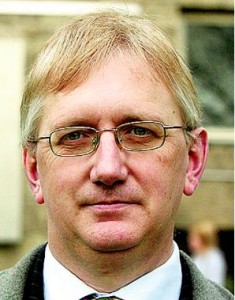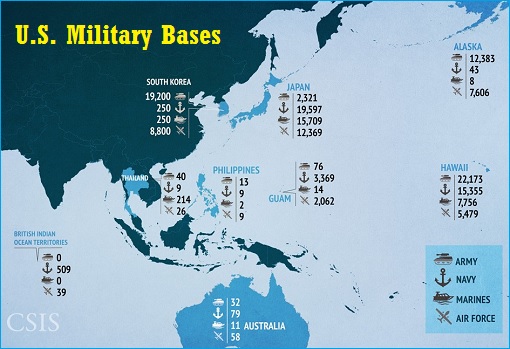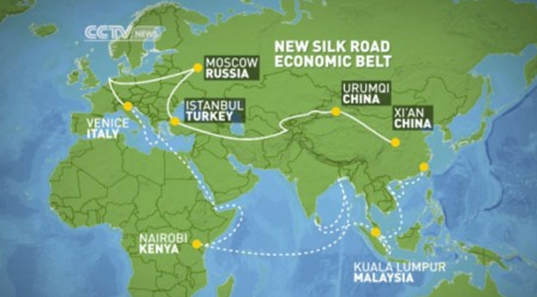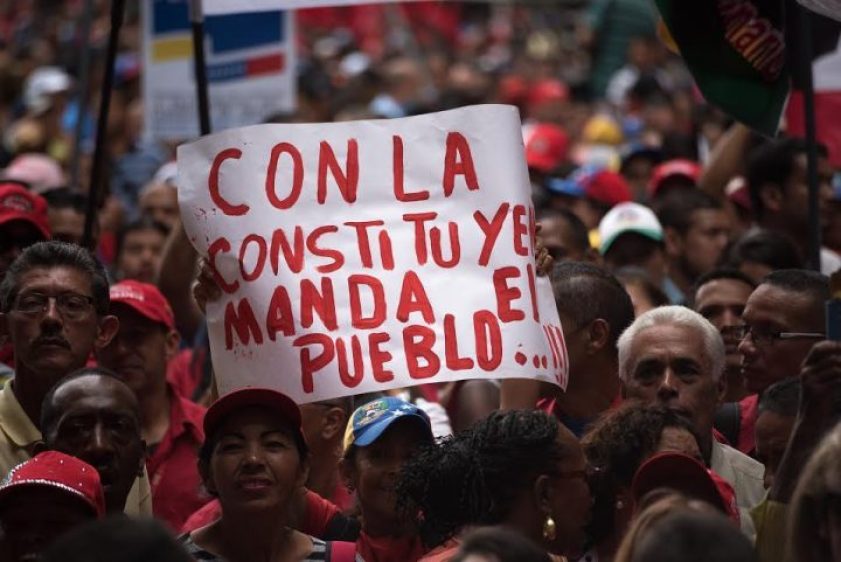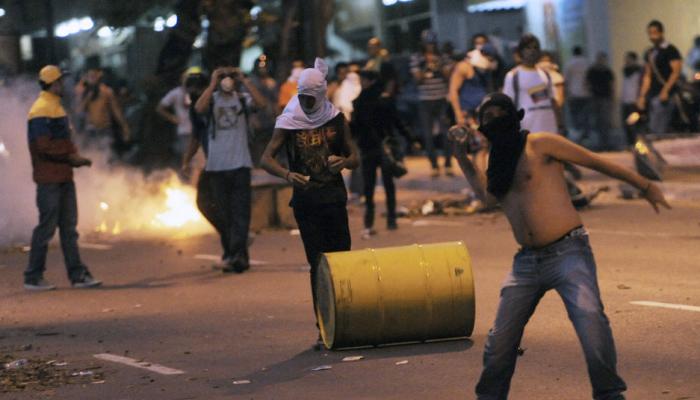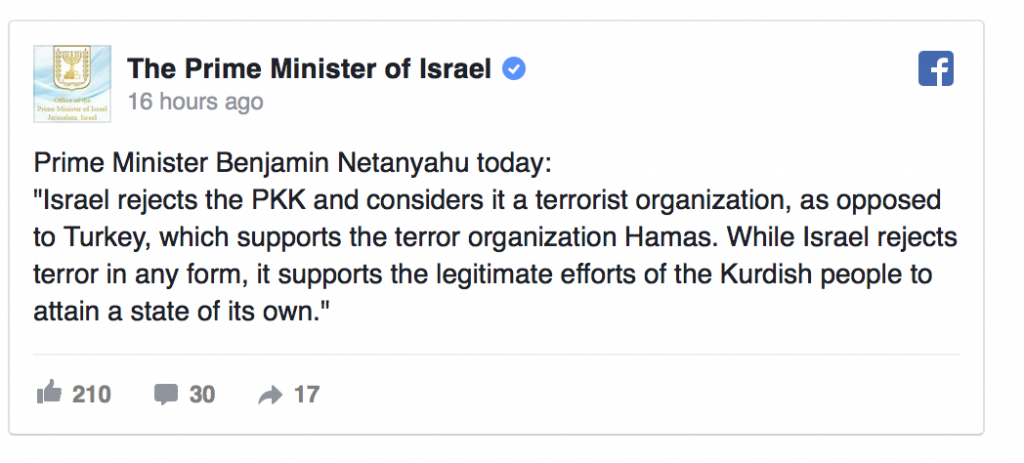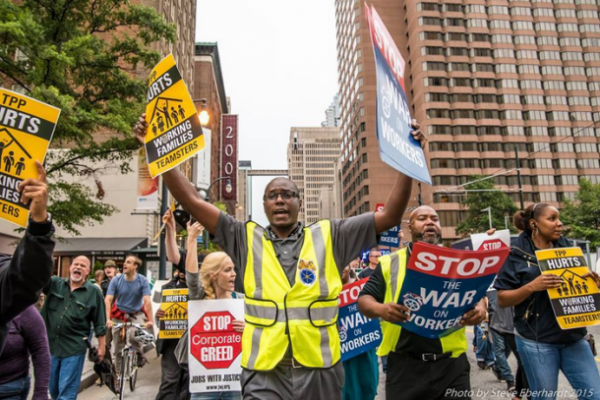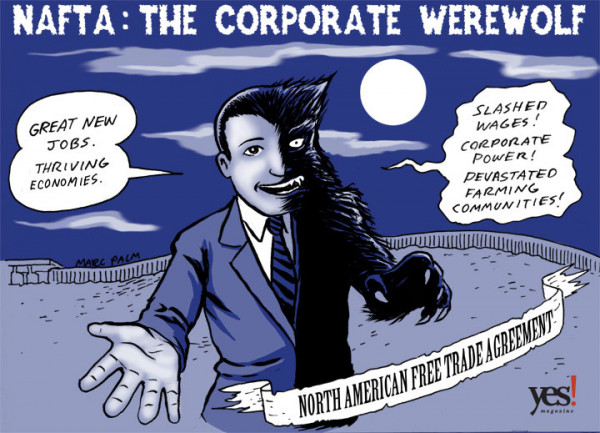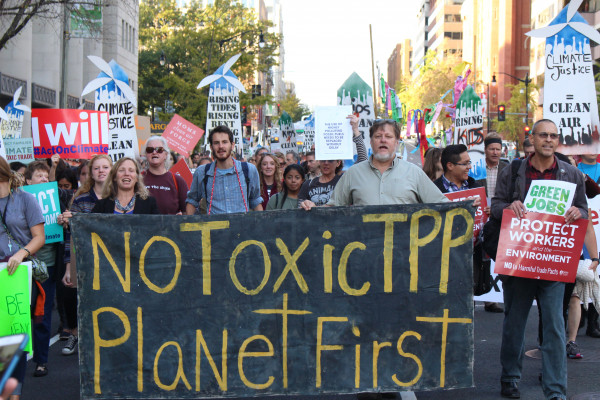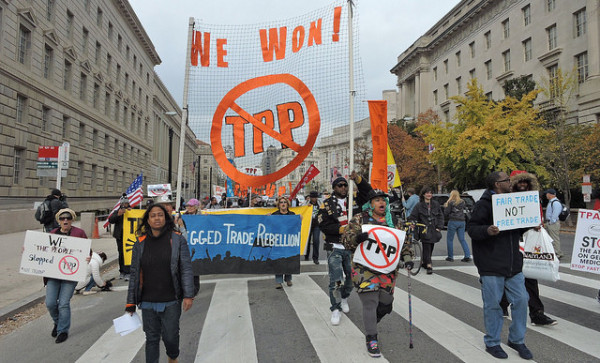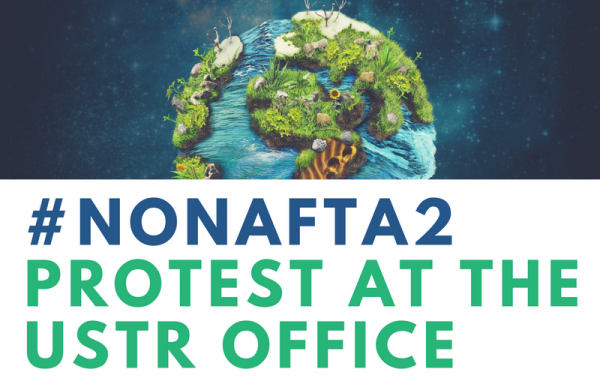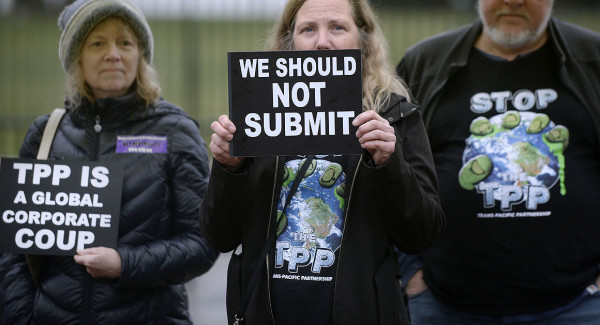The Russian Hacking Story Continues to Unravel
September 15th, 2017 by Mike Whitney
A new report by a retired IT executive at IBM, debunks the claim that Russia interfered in the 2016 presidential campaign by hacking Democratic computers and circulating damaging information about Hillary Clinton. The report, which is titled “The Non-Existent Foundation for Russian Hacking Charge“, provides a rigorous examination of the wobbly allegations upon which the hacking theory is based, as well as a point by point rejection of the primary claims which, in the final analysis, fail to pass the smell test. While the report is worth reading in full, our intention is to zero-in on the parts of the text that disprove the claims that Russia meddled in US elections or hacked the servers at the DNC.
Let’s start with the fact that there are at least two credible witnesses who claim to know who took the DNC emails and transferred them to WikiLeaks. We’re talking about WikiLeaks founder Julian Assange and WikiLeaks ally, Craig Murray. No one is in a better position to know who actually took the emails than Assange, and yet, Assange has repeatedly said that Russia was not the source. Check out this clip from the report:
Assange …. has been adamant all along that the Russian government was not a source; it was a non-state player. …
ASSANGE: Our source is not a state party
HANNITY (Conservative talk show host): Can you say to the American people unequivocally that you did not get this information about the DNC, John Podesta’s emails — can you tell the American people 1,000 percent you did not get it from Russia…
ASSANGE: Yes.
HANNITY: … or anybody associated with Russia?
ASSANGE: We — we can say and we have said repeatedly… over the last two months, that our source is not the Russian government and it is not a state party…
(“The Non-Existent Foundation for Russian Hacking Charge”, Skip Folden)
Can you think of a more credible witness than Julian Assange? The man has devoted his entire adult life to exposing the truth about government despite the risks his actions pose to his own personal safety. In fact, he is currently holed up at the Ecuador embassy in London for defending the public’s right to know what their government is up to. Does anyone seriously think that a man like that would deliberately lie just to protect Russia’s reputation?
No, of course not, and the new report backs him up on this matter. It states:
“No where in the Intelligence Community’s Assessment (ICA) was there any evidence of any connection between Russia and WikiLeaks.”
The reason Assange keeps saying that Russia wasn’t involved is because Russia wasn’t involved. There’s nothing more to it than that.
As for the other eyewitness, Craig Murray, he has also flatly denied that Russia provided WikiLeaks with the DNC emails. Check out this except from an article at The Daily Mail:
(Murray) “flew to Washington, D.C. for emails….He claims he had a clandestine hand-off … near American University with one of the email sources. Murray said the leakers’ motivation was ‘disgust at the corruption of the Clinton Foundation and the tilting of the primary election playing field against Bernie Sanders’…
Murray says: ‘The source had legal access to the information. The documents came from inside leaks, not hacks’. ‘Regardless of whether the Russians hacked into the DNC, the documents Wikileaks published did not come from that,’ Murray insists.” ….
Murray said he was speaking out due to claims from intelligence officials that Wikileaks was given the documents by Russian hackers as part of an effort to help Donald Trump win the U.S. presidential election.
‘I don’t understand why the CIA would say the information came from Russian hackers when they must know that isn’t true,’ he said. ‘Regardless of whether the Russians hacked into the DNC, the documents Wikileaks published did not come from that.”
(EXCLUSIVE: Ex-British ambassador who is now a WikiLeaks operative claims Russia did NOT provide Clinton emails“, Daily Mail)
Is Craig Murray, the former British ambassador to Uzbekistan and human rights activist, a credible witness?
There’s one way to find out, isn’t there? The FBI should interview Murray so they can establish whether he’s telling the truth or not. And, naturally, one would assume that the FBI has already done that since the Russia hacking story has been splashed across the headlines for more than a year now.
But that’s not the case at all. The FBI has never questioned Assange or Murray, in fact, the FBI has never even tried to get in touch with either of them. Never. Not even a lousy phone call. It’s like they don’t exist.
Why? Why hasn’t the FBI contacted or questioned the only two witnesses in the case?
Could it be because Assange and Murray’s knowledge of the facts doesn’t coincide with the skewed political narrative the Intel agencies and their co-collaborators at the DNC what to propagate? Isn’t that what’s really going on? Isn’t Russia-gate really just a stick for beating Russia and Trump? How else would one explain this stubborn unwillingness of the FBI to investigate what one senator called “The crime of the century”?
Here’s something else from the report that’s worth mulling over:
“It is no secret that NSA has the technology to trace a web event, e.g., a cyber attack, back to its source. There has been no public claim, nor is it implied in either Grizzly Steppe or the ICA that the NSA has trace routing to Russia on any of these purported Russian hacks.” (“The Non-Existent Foundation for Russian Hacking Charge”, Skip Folden)
This is a crucial point, so let’s rephrase that in simple English. What the author is saying is that: If Russia hacked the DNC computers, the NSA would know about it. It’s that simple.
But no one at the NSA has ever verified the claims or produced one scintilla of evidence that connects Russia to the emails. In fact, the NSA has never even suggested that such evidence exists. Nor has anyone in the media asked Director Michael Rogers point blank whether the NSA has hard evidence that Russia hacked the DNC servers?
Why? Why this conspiracy of silence on a matter that is so fundamental to the case that the NSA and the other Intel agencies are trying to make?
The only logical explanation is that there’s no proof that Russia was actually involved. Why else would the NSA withhold evidence on a matter this serious? It makes no sense.
According to the media, Intelligence agents familiar with the matter have “high confidence” that Russia was involved.
Okay, but where’s the proof? You can’t expect to build a case against a foreign government and a sitting president with just “high confidence”. You need facts, evidence, proof. Where’s the beef?
We already mentioned how the FBI never bothered to question the only eyewitnesses in the case. That’s odd enough, but what’s even stranger is the fact that the FBI never seized the DNC’s servers so they could conduct a forensic examination of them. What’s that all about? Here’s an excerpt from the report:
“The FBI, having asked multiple times at different levels, was refused access to the DNC server(s). It is not apparent that any law enforcement agency had access.
The apparent single source of information on the purported DNC intrusion(s) was from Crowdstrike.
3. Crowdstrike is a cyber security firm hired by the Democratic Party.
4. Not the FBI, CIA, nor NSA organizations analyzed the information from Crowdstrike. Only picked analysts of these agencies were chosen to see this data and write the ICA….”
( “The Non-Existent Foundation for Russian Hacking Charge)
Have you ever read anything more ridiculous in your life? The FBI’s negligence in this case goes beyond anything I’ve ever seen before. Imagine if a murder was committed in the apartment next to you and the FBI was called in to investigate. But when they arrive at the scene of the crime, they’re blocked at the door by the victim’s roommate who refuses to let them in. Speaking through the door, the roommate assures the agents that the victim was shot dead with a single bullet to the head, and that the smoking gun that was used in the murder is still on the floor. But “don’t worry”, says the obstructing roommate, “I’ve already photographed the whole thing and I’ll send you the pictures as soon as I get the chance.”
Do you really think the agents would put up with such nonsense?
Never! They’d kick down the door, slap the roommate in handcuffs, cordon-off the murder scene, and start digging-around for clues. That’s what they’d do. And yet we are supposed to believe that in the biggest case of the decade, a case that that allegedly involves foreign espionage and presidential treason, that the FBI has made no serious effort to secure the servers that were allegedly hacked by Russia?
The DNC computers are Exhibit A. The FBI has to have those computers, and they are certainly within their rights to seize them by any means necessary. So why haven’t they? Does the FBI think they can trust the second-hand analysis from some flunkey organization whose dubious background casts serious doubt on their conclusions?
It’s a joke! The only rational explanation for the FBI’s behavior, is that they’ve been told to “stand down” so they don’t unwittingly expose the truth about what’s really going on, that the whole Russia hacking fiction is a complete and utter fraud, and that the DNC, the CIA and the media are all having a good laugh at the expense of the clueless American people.
Here’s another interesting clip from the report:
“Adam Carter: …the FBI do not have disk images from any point during or following the alleged email hack. … CrowdStrike’s failure to produce evidence. – With Falcon installed between April and May (early May), they should have had evidence on when files/emails/etc were copied or sent. – That information has never been disclosed.”
(“The Non-Existent Foundation for Russian Hacking Charge”, Skip Folden)
Read that excerpt over again. It’s mind boggling. What Carter is saying is that, they have nothing, no evidence, no proof, no nothing. If you don’t have a disk image, then what do you have?
You have nothing, that’s what. Which means that everything we’ve read is 100 percent conjecture, not a shred of evidence anywhere. Which is why the focus has shifted to Manafort, Flynn, Trump Jr and the goofy Russian lawyer?
Who gives a rip about Manafort? Seriously?
The investigation started off with grave allegations of foreign espionage and presidential collusion (treason?) and quickly downshifted to the illicit financial dealings of someone the American people could care less about. Talk about mission creep!
What people want is proof that Russia hacked the DNC servers or that Trump cozied up to Russia to win the election. Nothing else matters. All these diversions prove is that, after one full year of nonstop, headline sensationalism, the investigation has produced nothing; a big, fat goose-egg.
A few words about the ICA Report
Remember the January 6, Intelligence Community Assessment? The ICA report was supposed to provide iron-clad proof that Russia hacked Democratic emails and published them at WikiLeaks. The media endlessly reiterated the claim that all 17 U.S. intelligence agencies took part in the assessment and that it’s conclusions represented the collective, objective analysis of America’s finest.
Right. The whole thing was a fraud. As it happens, only four of the agencies participated in the project (the CIA, the NSA, the FBI, and the Office of the Director of National Intelligence.) and the agents who provided the analysis were hand-picked for the task. Naturally, when a director hand-picks particular analysts for a given assignment, one assumes that they want a particular outcome. Which they did. Clearly, in this case, the intelligence was tailored to fit the policy. The intention was to vilify Russia in order to further isolate a country that was gradually emerging as a global rival. And the report was moderately successful in that regard too, except for one paradoxical disclaimer that appeared on page 13. Here it is:
“Judgments are not intended to imply that we have proof that shows something to be a fact. … Assessments are based on collected information, which is often incomplete or fragmentary, as well as logic, argumentation, and precedents.” …
What the authors are saying is that, ‘Everything you read in this report could be complete baloney because it’s all based on conjecture, speculation and guesswork.’
Isn’t that what they’re saying? Why would anyone waste their time reading a report when the authors openly admit that their grasp of what happened is “incomplete or fragmentary” and they have no “proof” of anything?
Gregory Copley, President, International Strategic Studies Association (ISSA) summed it up best when he said:
“This is a highly politically motivated and a subjective report which was issued by the intelligence community. … does not present evidence of successful or even an attempt to actually actively manipulate the election process.”
Like we said, it’s all baloney.
Lastly, Folden’s report sheds light on the technical inconsistencies of the hacking allegations. Cyber-forensic experts have now shown that “The alleged “hack” was effectively impossible in mid-2016. The required download speed of the “hack” precludes an internet transfer of any significant distance.” In other words, the speed at which the emails were transferred could only have taken place if they were “Downloaded onto external storage, e.g., 2.0 thumb drive.” (The report also provides evidence that the transfers took place in the Eastern time zone, which refutes the theory that the servers were hacked from Romania.)
The Nation summed it up perfectly in this brief paragraph:
“There was no hack of the Democratic National Committee’s system on July 5 last year—not by the Russians, not by anyone else. Hard science now demonstrates it was a leak—a download executed locally with a memory key or a similarly portable data-storage device. In short, it was an inside job by someone with access to the DNC’s system.” (“A New Report Raises Big Questions About Last Year’s DNC Hack”, Patrick Lawrence, The Nation)
Bingo.
Bottom line: A dedicated group of independent researchers and former Intel agents joined forces and produced the first hard evidence that “the official narrative implicating Russia” is wrong. This is a stunning development that will, in time, cut through the fog of government propaganda and reveal the truth. Skip Folden’s report is an important contribution to that same effort.
Note: Skip Folden is a Private Intelligence analyst and a retired IBM Program Manager for Information Technology. His report has been submitted to the House and Senate Intelligence Committees, the Office of Special Council (Robert Mueller), and the Deputy Attorney General, Rod Rosenstein. The report was released on September 13, 2017
Read the whole report here: “Non-Existent Foundation for Russian Hacking Charge“, Skip Folden, Word Press.
Mike Whitney lives in Washington state. He is a contributor to Hopeless: Barack Obama and the Politics of Illusion (AK Press). Hopeless is also available in a Kindle edition. He can be reached at [email protected].
Featured image is from sime simon | CC BY 2.0.
